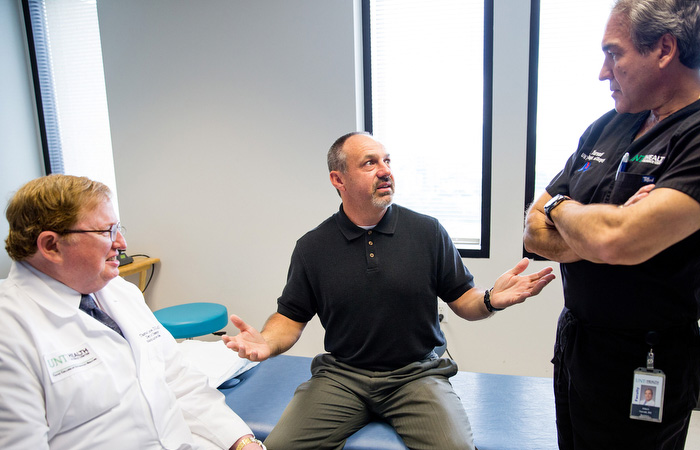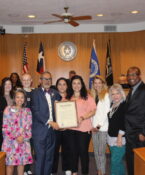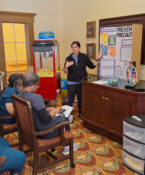Confronting the problem of medical errors at Patient Safety Summit
By Betsy Friauf
Dale Akers lost a rib to a medical error.
Register now
|
An incorrect diagnosis led a surgeon to remove one of his ribs in the mistaken belief it would cure the pain in Akers’ chest and abdomen and his debilitating shortness of breath.
After a cardiac workup came back normal, this usually athletic middle-aged dad was desperate for help. “It felt like heart-attack symptoms, all day,” he said.
Giving up a rib didn’t help. He struggled to throw a football around with his two sons and was forced to curtail physical activity on the job.
But Akers was lucky. Medical errors kill almost a half million Americans every year.
UNT Health Science Center in Fort Worth is doing something about it. With $4 million in state money allocated during the 2015 legislative session, forward-thinking leaders are establishing a Patient Safety Institute.
And on Nov. 6-7, the University hosts a summit meeting of top thinkers and doers who are working to make health care safer.
Presenters include experts who have served with the Veterans Administration, Centers for Disease Control, and the World Health Organization, as well as leaders from major healthcare systems like the Mayo Clinic and the University of California, San Francisco. They’ll share their experiences and innovative approaches to patient safety, and panels representing patient voices, academicians and specialists will address barriers and propose solutions.
Last month, the national Institutes of Medicine released a milestone report showing that under the present system, “most people will experience at least one diagnostic error in their lifetime, sometimes with devastating consequences.”
Awkward technology, “defensive medicine” that dictates which tests are administered to the patient, and lack of ways for various providers to work in teams leads to many of these errors.
Akers knows all about it. “I couldn’t tell you how much I spent on tests, co-pays and other fees before I got the right diagnosis,” he said.
After six years of failed treatments, Akers got his life back. Team treatment at the UNT Health Science Center restored his health. Read Dale Akers’ story
It’s that model of collaboration, communication and patient-centered care that will lead the way to better patient outcomes – and improved patient safety.




![Uyen Sa Nguyen Scaled[58]](https://www.unthsc.edu/newsroom/wp-content/uploads/sites/16/Uyen-Sa-Nguyen-scaled58-145x175.jpg)

Social media